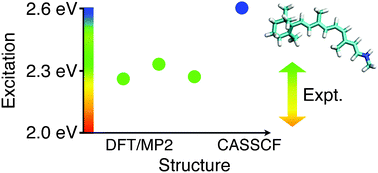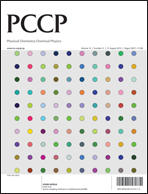Excitation energies of retinalchromophores: critical role of the structural model†
Abstract
We employ a variety of highly-correlated approaches including quantum Monte Carlo (QMC) and the n-electron valence state perturbation theory (NEVPT2) to compute the vertical excitation energies of retinal protonated


 Please wait while we load your content...
Please wait while we load your content...